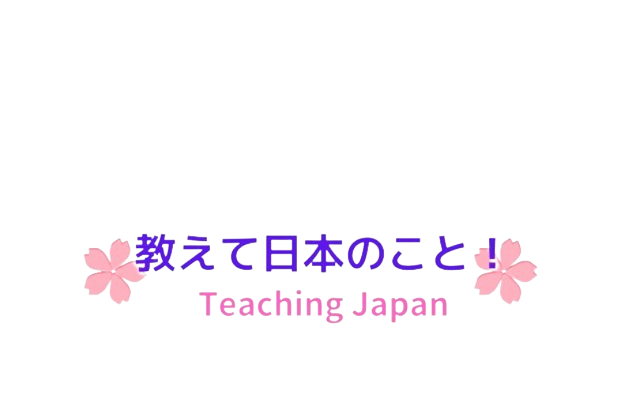日本人のルーツは、はっきりとは分かっていません。しかし、多くの研究から、日本人の祖先は、縄文人と弥生人であったと考えられています。The roots of the Japanese people are not clearly known. However, a number of studies suggest that the ancestors of the Japanese were Jomon and Yayoi people.
日本人のルーツ(起源)はどこ?ーWhere are Japanese roots?

日本人の起源(ルーツ)については、様々な説があります。最も有力な説は、約3万年前に朝鮮半島から日本列島に渡ってきた縄文人説です。縄文人は、狩猟採集民であり、独自の文化を持っていました。約2300年前には、中国大陸から渡ってきた弥生人が日本列島に定住し始めました。弥生人は、農耕民であり、鉄器や青銅器などの技術を持っていました。縄文人と弥生人は混血し、現代の日本人の祖先になりました。 There are various theories about the origin (roots) of the Japanese people. The most convincing theory is that Jomon people migrated from the Korean Peninsula to the Japanese archipelago about 30,000 years ago. The Jomon people were hunter-gatherers and had their own culture. About 2,300 years ago, the Yayoi people who migrated from mainland China began to settle in the Japanese archipelago. The Yayoi people were farmers and possessed the skills of ironware and bronzeware. Jomon people and Yayoi people interbred and became the ancestors of modern Japanese.
近年、遺伝学的研究により、日本人のルーツについて新たなことが分かってきました。日本人の遺伝子の約80%は縄文人から、約20%は弥生人から来ていることが分かっています。これは、日本人は縄文人と弥生人の混血で形成されたことを示しています。 In recent years, genetic studies have revealed new things about the roots of the Japanese. It is known that about 80% of Japanese genes come from the Jomon people and about 20% from the Yayoi people. This shows that the Japanese were formed by a mixture of the Jomon people and the Yayoi people.
また、日本人の起源はもっと古く、アジア大陸から来たという説もあります。この説によると、日本人の祖先は、約10万年前にユーラシア大陸からアジア大陸に移住し、その後、日本列島に渡ってきたとされています。この説は、日本人の遺伝子や言語に、アジア大陸の他の地域の民族と共通点があることを根拠としています。 There is also a theory that the origin of the Japanese people is even older, coming from the Asian continent. According to this theory, the ancestors of the Japanese migrated from the Eurasian continent to the Asian continent about 100,000 years ago, and then migrated to the Japanese archipelago. This theory is based on the commonalities of Japanese genes and language with peoples from other parts of the Asian continent.
日本人の起源については、まだ多くの謎が残されています。今後、遺伝学や考古学などの研究が進み、日本人の起源がより明らかになることが期待されます。 There are still many mysteries about the origin of the Japanese people. It is hoped that the origins of the Japanese people will become clearer as research in genetics and archaeology advances.
〇 縄文人とは?ーWhat are Jomon people?

縄文人(じょうもんじん)は、日本列島に約1万4,000年前から約2,300年前まで存在した先史時代の人々を指します。縄文時代という時代区分は、その特徴的な土器に使われた「縄文文様(縄目模様)」に由来しています。 Jomon people refer to prehistoric people who lived in the Japanese archipelago from about 14,000 years ago to about 2,300 years ago. The Jōmon period is named after the characteristic “Jomon pattern” that was used on the pottery.
縄文人は、平均身長が160cm前後と、現代の日本人よりも少し背が低かったようです。また、彫りの深い顔立ちで、目が大きく、鼻が高かったと言われています。縄文人は、髪を長く伸ばし、髪を結ぶことが多かったようです。
縄文人は、狩猟採集民であり、魚や貝、獣や鳥などを捕って食べていました。また、木の実や野菜なども食べていたようです。縄文人は、農耕を行っていなかったため、食料は季節によって変わっていたようです。
縄文人は、独自の文化を持っており、土器や石器、楽器などを作っていました。縄文人は、土器を焼いて食べ物を保存したり、煮たりしていました。また、石器を使って狩りをしたり、道具を作ったりしていました。縄文人は、楽器を演奏して、音楽を楽しんでいたようです。
縄文人は、日本列島で約1万6000年間にわたって繁栄していました。しかし、約3000年前に、中国大陸から稲作文化を持った弥生人が日本列島に渡ってきました。弥生人は、農耕によって食料を安定的に生産することができ、縄文人を圧倒しました。縄文人は、弥生人と混血し、弥生人の文化を取り入れました。そして、縄文人は、弥生人に吸収され、消滅していきました。 The Jomon people thrived in the Japanese archipelago for about 16,000 years. However, about 3,000 years ago, the Yayoi people with rice farming culture came to the Japanese archipelago from mainland China. The Yayoi people were able to produce food in a stable manner through agriculture, and overwhelmed the Jomon people. The Jomon people mixed with the Yayoi people and adopted the culture of the Yayoi people. The Jomon people were absorbed by the Yayoi people and disappeared.
縄文人は、日本列島で最初の人々であり、日本文化の礎を築いた人々です。縄文人の文化は、現代の日本人の文化にも受け継がれています。
縄文時代の終わりには、新たな時代である弥生時代が始まり、農耕文化の導入や鉄器の使用など、大きな変化が起こりました。縄文人はその後の日本人の祖先としての役割を果たしており、日本人のルーツにおいて重要な存在です。
〇 弥生人とは?ーWhat are Yayoi people?

弥生人(やよいじん)は、紀元前3世紀頃に中国大陸から日本列島に渡ってきた人々のことです。彼らは農耕民であり、鉄器や青銅器などの技術を持っていました。弥生人は、日本列島に稲作文化をもたらし、日本社会に大きな変化をもたらしました。 The Yayoi people are people who came to the Japanese archipelago from mainland China around the 3rd century BC. They were farmers and had skills in iron and bronze tools. The Yayoi people brought rice farming culture to the Japanese archipelago and brought great changes to Japanese society.
弥生人は、現代の日本人よりも少し背が低かったようです。また、顔立ちは彫りが浅く、目は細く、鼻は低かったと言われています。弥生人は、髪を短く切り、髪を結ぶことが多かったようです。
弥生人は、農耕民であり、稲を主食としていました。また、野菜や果物、肉や魚なども食べていたようです。弥生人は、農耕によって食料を安定的に生産することができ、人口を増やすことができました。
弥生人は、独自の文化を持っており、土器や青銅器、鉄器などを作っていました。弥生人は、土器を使って食べ物を保存したり、煮たりしていました。また、青銅器や鉄器を使って武器や道具を作ったりしていました。弥生人は、独自の文字を持っていたかどうかは分かっていません。
弥生人は、日本列島に約1500年間にわたって繁栄していました。しかし、5世紀頃に、朝鮮半島から渡ってきた古代朝鮮系の渡来人によって、その文化は衰退していきました。弥生人は、古代朝鮮系の渡来人と混血し、古代朝鮮系の渡来人の文化を取り入れました。そして、弥生人は、古代朝鮮系の渡来人に吸収され、消滅していきました。
弥生人は、日本列島に稲作文化をもたらし、日本社会に大きな変化をもたらした人々です。弥生人の文化は、現代の日本人の文化にも受け継がれています。
弥生人の存在は、日本人のルーツにおいて重要な役割を果たしています。彼らの農耕技術や文化は日本列島全体に広がり、後の時代の日本社会の基盤を築く一因となりました。弥生時代の文化や技術の変化は、日本の歴史や文化の発展において重要な転換点となっています。 The existence of the Yayoi people plays an important role in the roots of the Japanese people. Their farming techniques and culture spread throughout the Japanese archipelago and played a role in laying the foundations of Japanese society in later times. The change in culture and technology during the Yayoi period has become an important turning point in the development of Japanese history and culture.
弥生時代の終わりには、新たな時代である古墳時代が始まり、王権や豪族の勢力が発展しました。弥生人は、その後の日本人の祖先としての役割を果たしており、日本人のルーツにおいて重要な存在です。



